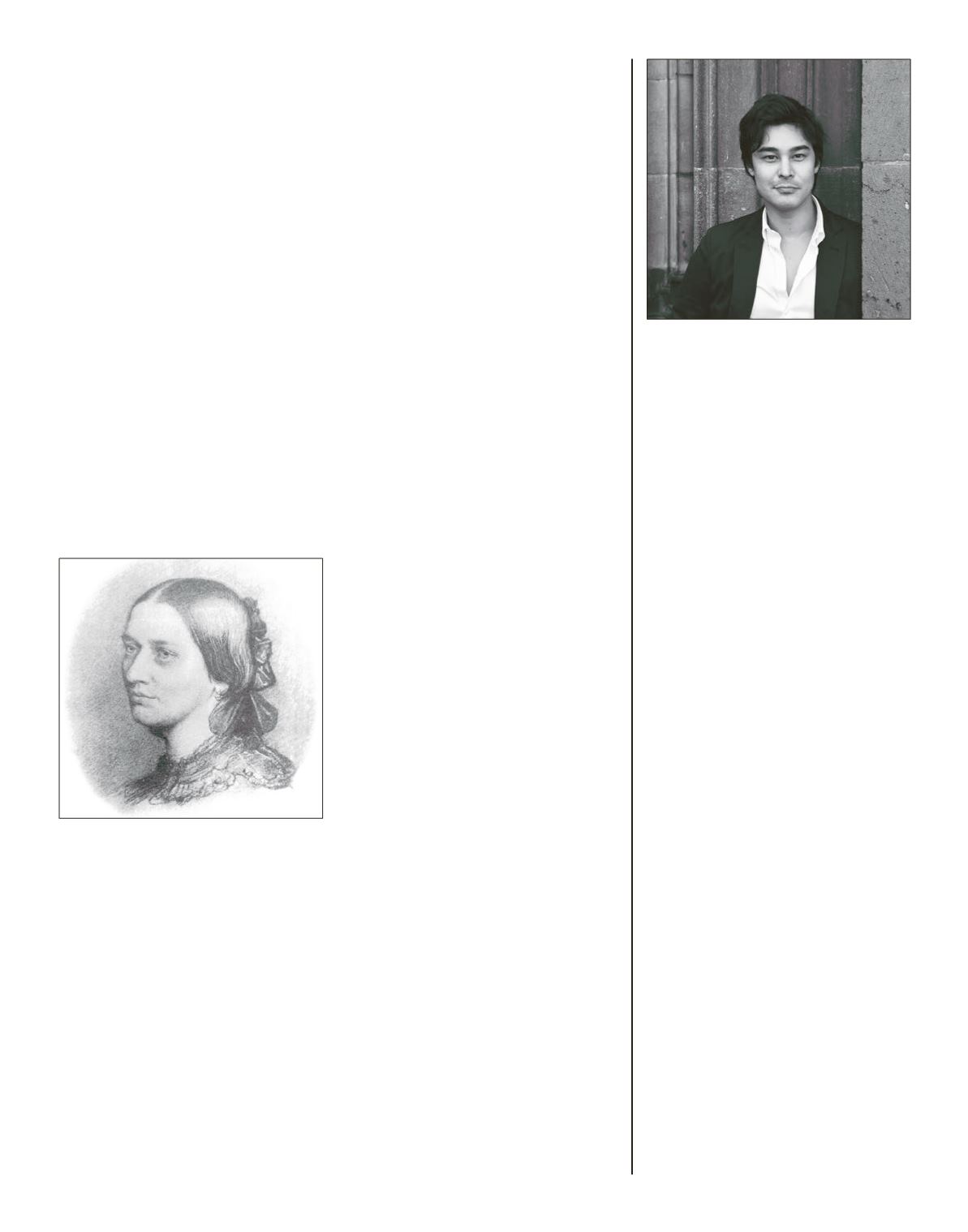
CHRISTOPHER PARK,
piano
e winner of the Schleswig-Holstein Music
Festival’s
Leonard Bernstein Award—join-
ing the ranks of Lang Lang, Lisa Batiashvili, and
Martin Grubinger—German-Korean pianist
Christopher Park has trained in both the Rus-
sian school of Lev Oborin with Lev Natochenny
and the German school of Wilhelm Kemp with
Joachim Volkmann.
at same year he substi-
tuted for Emanuel Ax with the North German
Radio Symphony Orchestra to great acclaim
and made his debut at Vienna’s Musikverein
with the Kuchl Quartet, an ensemble of Vienna
Philharmonic members. He was subsequent-
ly nominated for the orchestra’s Credit Suisse
Award. Park has also appeared as a soloist with
the Deutsche Symphony Orchestra of Berlin; Vi-
enna, Galicia, Shanghai, and Bamberg Sympho-
ny Orchestras; Frankfurt and Elbphilharmonie
Radio Symphony Orchestras; Magdeburg, Qa-
tar, and Zagreb Philharmonics; Wurttemberg
Chamber Orchestra Heilbronn; Spanish Nation-
al Orchestra; Chamber Orchestra of Lausanne;
Frankfurt Opera Orchestra; and China NCPA
Orchestra, among many other ensembles. Addi-
tionally, he has appeared in concert at the Meck-
lenburg-Vorpommern and Schleswig-Holstein
Festivals, Weilburger Schlosskonzerte, Rheingau
Music Festival, Quincena Musical de San Sebas-
tian, and Burgos International Music Festival.
As a chamber musician, Park has collaborated
with such artists as mandolinist Avi Avital, vi-
olist Richard O’Neill, violinist Leticia Moreno,
cellist Adolfo Gutierrez Arenas, and soprano
Sumi Jo. He has also worked closely with bal-
let choreographer and director John Neumeier
on projects including music from Stravinsky’s
Petrushka
, Schumann’s
Kinderszenen
, and solo
suites by Bach. Named a Rising Star by the Eu-
ropean Concert Hall Organization in
, Park
spent the next year making debuts at major ven-
ues in London, Amsterdam, Hamburg, Vienna,
Stockholm, Barcelona, Budapest, Lisbon, and
many other music centers. Christopher Park is
making his rst return to Ravinia following his
debut.
e manuscript displays a series of emenda-
tions, apparently in anticipation of an imme-
diate second edition that never came to pass.
None of these modi cations appeared in the
much-delayed second edition of
, published
by Schuberth & Co. Schumann imposed other
signi cant changes, such as adding the delet-
ed Scherzo II as a new second movement and
changing the meter in the nale from / to a
more common / with triple rhythms. Most
critically, Schumann restored the original desig-
nation of “Grande Sonate” (or, Sonata No. ) in
this four-movement second edition.
Regardless of its form, the musical substance
of this solo-piano work is intimately connected
with Clara Wieck ( – ), the exceptionally
talented pianist and daughter of Schumann’s
piano teacher Friedrich Wieck. Robert and the
much younger Clara became acquainted a er he
began lessons with Wieck in August
.
e
couple became secretly engaged on August ,
, and their mutual a ection culminated in a
rst kiss on November ,
. Wieck opposed
the union for years—a tumultuous period for
Robert and Clara—until the Court of Appeals
granted Clara the legal right to marry on Au-
gust ,
, less than two weeks before her st
birthday.
Clara deeply inhabited Robert’s thoughts,
emotions, and musical invention during the
composition of the
Concert sans orchestre
.
e
most immediately obvious recollection comes
in the
Quasi variazioni
, a set of four (original-
ly six) variations on an
Andantino
by Clara, the
central point in the
Concert sans orchestre
. By
that movement, the variation process has been
well under way, since the opening
Allegro
also
derives its thematic materials from the
Andan-
tino
. In fact, the piano begins by asserting the
opening ve notes of Clara’s theme dramatically
in the bass.
is motif permeates nearly every
measure, weaving throughout the texture as
both melody and accompaniment.
ough less
easily heard in the
Prestissimo possibile
(appro-
priately marked “passionato”), versions of the
motif, sometimes chromatic, emerge through-
out this perpetual-motion nale.
Blumenstück
in D- at major, op.
e short, stand-alone piano piece
Blumenstück
in D- at major, op. ( ), is the product of
Schumann’s brief period in Vienna. Its music
presents a series of episodes in an irregular se-
quence, which the composer clearly identi ed
analytically with Roman numerals placed in
the score: I–II–III–II–IV–V–Minore II–IV–II.
Schumann’s unusual scheme combines elements
of rondo and variation forms, with the second
theme functioning dually as a refrain and set of
variations. All sections incorporate the “Clara
motive,” some more obviously than others.
Schumann dedicated the published score to Ma-
jorin Friederike Serre auf Maxen, who, with her
husband, Major Anton Serre, secretly supported
Robert’s marriage to Clara.
Faschingsschwank aus Wien
(
Phantasiebilder
), op.
Schumann composed four movements of
Fas-
chingsschwank aus Wien
(
Carnival Prank from
Vienna
) in Vienna during the winter of
– ;
he nished the
h a er his return to Leipzig
later in
. Schumann described this work,
subtitled
Phantasiebilder
(
Portraits of Fantasy
),
as a “great romantic sonata” in a letter to Si-
monin de Sire, an ardent advocate of his music
in Paris.
e “prank” in the title may refer to a
passing thematic reference to the “Marseillaise,”
a revolutionary song outlawed in Vienna, in
the rst movement.
e
Romanze
—a concise,
expressive piece—is followed by the equally
compact
Scherzino
. A simple melodic line with
repeated pitches is encased by the relentless,
swelling triplet accompaniment in the
Intermez-
zo
. e
Finale
is a sonata-form movement with
a driving
presto
coda.
–Program notes ©
Todd E. Sullivan
Clara Wieck Schumann
AUGUST 27 – SEPTEMBER 2, 2018 | RAVINIA MAGAZINE
103








